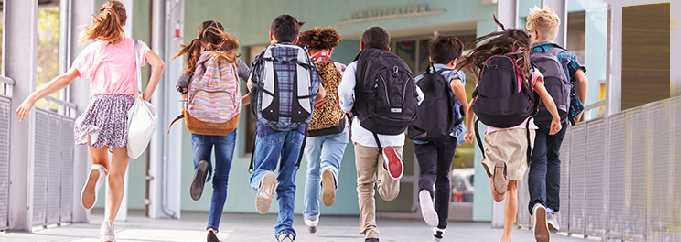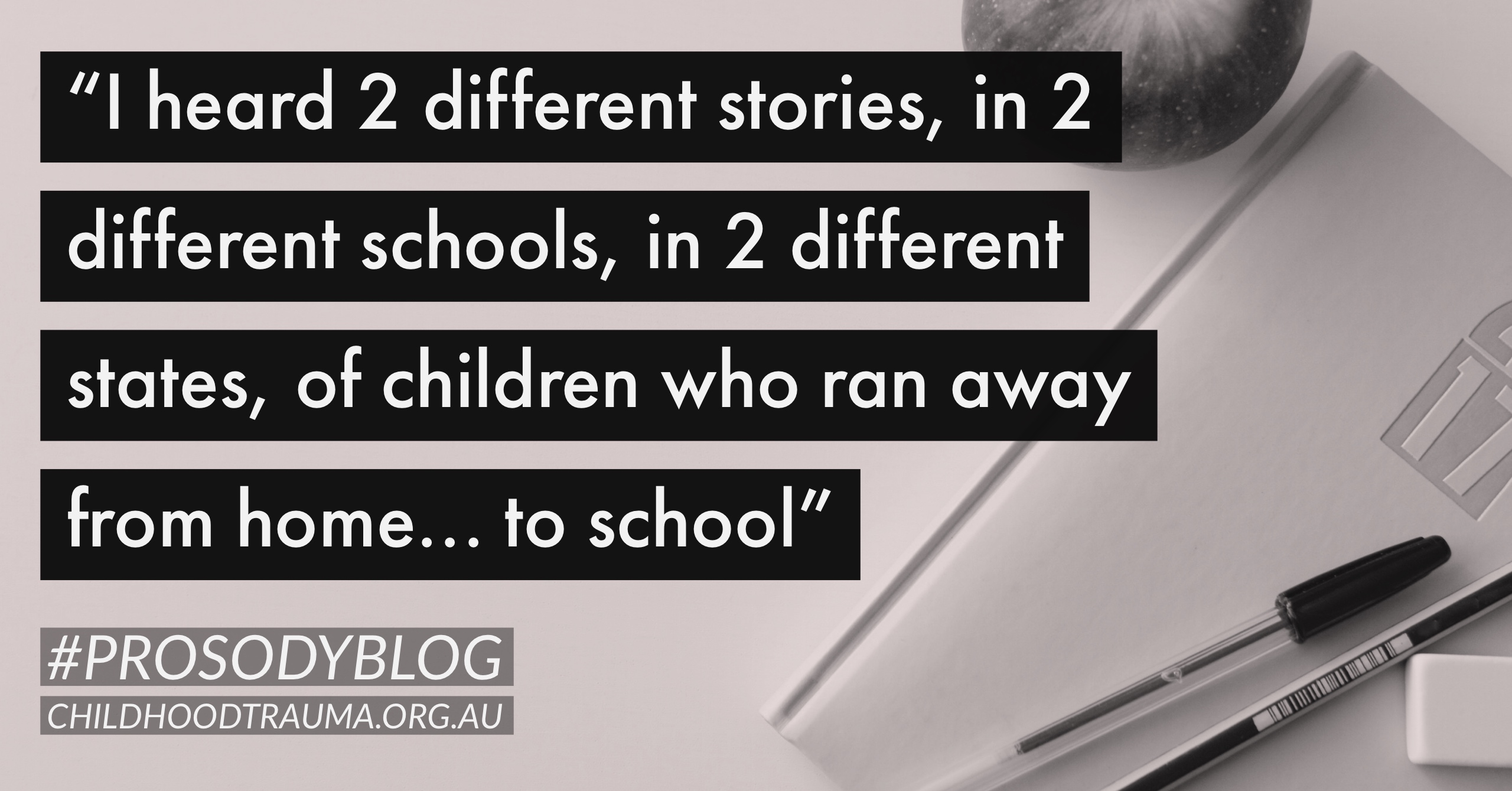
Running Away… to School.
This blog entry was authored by Alexa Duke,
Senior Training Consultant at the Australian Childhood Foundation.
In the last couple of months in my journeys around the country training into schools, I heard two different stories, in two different schools, in two different states, of children who had run away from home. They had packed a bag and run away to the safest place they knew, and when the cleaners arrived at 6am, there they were outside the school building, waiting. For many of our children and young people who have experienced  abuse, neglect, family violence or removal, schools are often the one safe and predicable place in their chaotic world.
abuse, neglect, family violence or removal, schools are often the one safe and predicable place in their chaotic world.
As Principals and teachers contemplate the return to school and organising for the carefully planned start of the new school year, what can be done to make young people feel safe in the midst of so much that is new and unpredictable? In the rush to get students back into the curriculum as quickly and as smoothly as possible at the start of the new school year, how much thought and time do we devote to making our students feel safe? What time do we spend connecting and engaging with our classes, connecting and engaging with each and every one of our students before we attempt anything else? How long before you can call each student by their name?
In the face of traumatic experiences such as abuse and neglect, children and young people’s brains are endlessly vigilant, constantly scanning their environment for where the next threat to their safety will come from. Their bodies act as if they are in a constant state of alarm. These responses are not choices these young people make, but rather a function of their autonomic nervous system. Uncertainty in their environment adds to this sense of threat and there is so much that is uncertain at the start of the school year because everything is new and they do not know what might come next: new school, new teacher, new classmates, new classroom rules, new subjects, new locker, new friends, new enemies, new routines, new timetables, new status.
This constant state of uncertainty and vigilance leaves little space for learning and young people struggle to concentrate, be present in the moment, engage with those around them or remember new information. This dysregulated body experience is often misinterpreted in our schools as deliberatively disruptive and challenging behaviour. And when our focus is continually on changing that behaviour, we are in danger of missing the meaning that the behaviour holds. What might that dysregulated behaviour be telling us? What is it that these students need to feel safe enough to engage their cortex, the thinking part of their brain? We need to look at the unmet feelings and needs that are driving the behaviour and creating an environment where those needs can be met. It is only when we feel safe and are in a calm state that we can learn.
 Feeling safe is more than an absence of danger or risk of injury. So in our schools we need more than codes of behaviour, rules and punitive treatment for those who ‘break the rules’ and make us feel unsafe. As Stephen Porges illustrates with his Polyvagal Theory, we can only learn, play and have fun with others when our nervous system detects that all is safe. As human beings we rely on social engagement and the sound of the human voice in order detect safety in our environment. What trauma does is that it changes our ability to interact with other human beings. Because abuse and neglect happen in the context of relationships, children and young people stop looking to relationships and social engagement to keep them safe. This is an adaptive behaviour to keep them safe, not bad behaviour. These are profound reactions which stop a young person being connected. Young people who have experienced abuse and neglect are in a physiological state which makes relationships intrusive and painful and they will not be able to engage in the social interactions which are so important, not only in the classroom but also in signalling to our defence system that we are safe. Safety is critical not only for positive reciprocal social behaviour, but also for accessing higher brain structures which enable us to learn and be creative (Porges, 2015). So we need to bring young people into relationship and social engagement. But when relationships have been intrusive and harmful, young people do not want to have their social engagement system working because this has not been safe, so they will reject us before we have a chance to reject them. And they sabotage and create chaos which feels so much safer than engaging.
Feeling safe is more than an absence of danger or risk of injury. So in our schools we need more than codes of behaviour, rules and punitive treatment for those who ‘break the rules’ and make us feel unsafe. As Stephen Porges illustrates with his Polyvagal Theory, we can only learn, play and have fun with others when our nervous system detects that all is safe. As human beings we rely on social engagement and the sound of the human voice in order detect safety in our environment. What trauma does is that it changes our ability to interact with other human beings. Because abuse and neglect happen in the context of relationships, children and young people stop looking to relationships and social engagement to keep them safe. This is an adaptive behaviour to keep them safe, not bad behaviour. These are profound reactions which stop a young person being connected. Young people who have experienced abuse and neglect are in a physiological state which makes relationships intrusive and painful and they will not be able to engage in the social interactions which are so important, not only in the classroom but also in signalling to our defence system that we are safe. Safety is critical not only for positive reciprocal social behaviour, but also for accessing higher brain structures which enable us to learn and be creative (Porges, 2015). So we need to bring young people into relationship and social engagement. But when relationships have been intrusive and harmful, young people do not want to have their social engagement system working because this has not been safe, so they will reject us before we have a chance to reject them. And they sabotage and create chaos which feels so much safer than engaging.
These are the behaviours which are so familiar and which derail the learning environment. If we can’t use relationships to enable these young people to experience safety, we need to use the sound of our voices to down regulate their defences. It is not our words that will make them feel safe, but the sound and prosody of our voice. We need to keep the melodic, singsong, higher pitch in our voices in all our interactions with young people if we want to optimise their sense of safety. Use melodic music and songs, engage with rhyme games, allow time for and privilege the sound of the human voice and minimise engagement with screens and technology. Remove as many of the low frequency sounds in the environment as possible, as these are the sounds which trigger our defence system. If we can open up the world of safety to our young people by what they are hearing, then they will be able to down-regulate their defence system and calm their body and their brain, begin to socially engage and then be able to learn. Time spent in bringing about this sense of safety and calm will be more than compensated by young people’s readiness to engage in the learning process, remember what they learn and develop supportive relationships with their peers. And classrooms and schools will be safer, calmer and more engaging learning environments.
For more blog entries on the topic of engaging and supporting children and young people in the school environment, click on ‘school’ in the tag cloud to the right.
